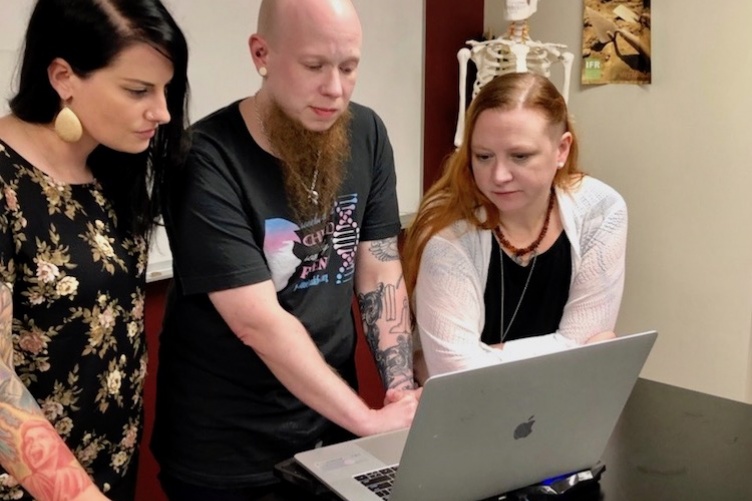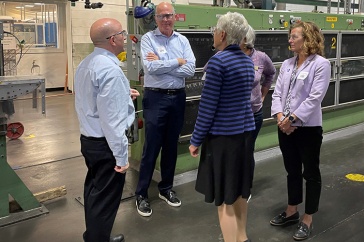
Amy Michael is a biological anthropologist. That means that instead of looking to the past to learn how people lived, she is often looking to see how they died.
A lecturer in UNH’s College of Liberal Arts, Michael specializes in the investigation of human tooth and bone microstructure, those tiny pieces best seen under a microscope. Through that lens, one can hope to learn a person’s age and overall health at the time of their death and the period during which the death occurred, all of which, if it’s not known, can lead to learning their name.
“These bones have been studied by the Smithsonian and the FBI and still remain unidentified, so the idea was to let anthropologists have a run at it.”
That last piece — discovering the identify of a deceased individual — is something that Michael is passionate about. To that end, when called upon, she works with law enforcement agencies and the DNA Doe Project to help identify unnamed and unclaimed remains. Most notable is a cold case she is trying to help solve that involves a mummified torso found in a cave in Idaho in 1979. When it was first discovered, there was no head and no limbs. The arms and legs were found in 1991.

Working with Idaho State University, the Clark County Sheriff’s Office and the DNA Doe Project, Michael hopes that new DNA techniques developed since the torso wrapped in burlap was unearthed 40 years ago will finally help identify the individual. Michael first learned of the case when she taught at Idaho State.
“These bones have been studied by the Smithsonian and the FBI and still remain unidentified, so the idea was to let anthropologists have a run at it,” Michael says. “We thought, oh, that’s impossible — let’s do this.” The bones are in good condition. But critical identifying information is missing, such as the sex and approximate age of the person. “There was hair on the arms,” Michael says. “But there were no markings, no tattoos and nothing to indicate the cause of death.”
Now, with the recent trend of people tracing their ancestors through autosomal DNA testing, there is a chance of finding a relative. Or the relative of a relative of a relative who reported someone missing in the state. Autosomal DNA refers to genes inherited from the autosomal chromosomes and is used in genealogical research. It’s the kind of DNA that helps someone trace a family tree and discover their heritage.
“With autosomal DNA, you’re looking at millions of different locations,” says Anthony Redgrave of the DNA Doe Project. “It typically takes about three months to close a case. One case was closed in four hours, and another took 14 months and more than 10,000 hours of research. It just depends on the case.”
Michael is also a senior staff member on the Central Belize Archaeological Survey project run through Michigan State University that has her excavating and interpreting a series of mortuary caves in that region. She uses that work and examples from the DNA Doe Project in her Forensic Anthropology and Cold Cases courses, talking about the “intersection between DNA analysis and forensic anthropology and working collaboratively toward the common goal of identification of victims.”
She also draws from her experience with law enforcement agencies.
“I get called to consult on cases that involve search and recovery, any kind of excavation of a body, human vs. non-human bone comparison,” Michael says. “The most important thing in any of these cases is that we find out who they are. New DNA testing has helped to solve cases around the country, so it’s reasonable to be optimistic that we can make some headway with the Idaho case and others that have gone unsolved for years. The families and loved ones of these people deserve closure.”
-
Written By:
Jody Record ’95 | Communications and Public Affairs | jody.record@unh.edu
















































